On Friday I went to pick up a couple of my saxophones from my repair tech, David. Because I’m still not quite satisfied with the tuning on my Toneking alto, I had hoped to try out a couple vintage alto Berg Larsen mouthpieces that David had. Unfortunately someone else has them out on trial ATM.
While David was looking through his mouthpiece box, he happened across this interesting vintage, metal Selmer alto mouthpiece, with fluted sides and a scroll shank. Note the patent pending notice stamped on top.
A silver-plated, scroll shank, Selmer alto mouthpiece with fluted sides
Because of its small bore, it didn’t work for the Toneking, but David suggested I take it home anyway, and try it on some of my other altos. I knew immediately that I wanted to try it on my 1930s Pierret.
When I got home, I did a bit of Internet research, and landed on Google Patents, which was most helpful. There I found US Patent 1,789,639, issued to Henri Selmer, on January 20, 1931. That patent was for a mouthpiece and ligature.
This is how Henri Selmer described the pieces in his patent application:
This invention relates to improvements in wind instruments, and more particularly to mouthpieces for saxophones or the like.
It has been the usual practice in constructing such mouthpieces, to merge the tone chamber into a relatively smaller bore, and to insert the neck of the saxophone or the like, into such bore. Such a construction provides pockets or recesses which interfere with the passage of the sound from the tone chamber into the body of the instrument. The primary object of the present invention is to furnish a mouthpiece having an internal tubular extension, the bore of which forms a clear unobstructed passageway that extends into the ordinary nipple which projects from the discharge end of the mouthpiece. As such tubular extension is spaced from the inner surface of the nipple, an annular recess is provided within the mouthpiece to receive the neck of the instrument, without forming cavities or pockets which will interfere with the tone of the instrument.
A further object is to provide a mouthpiece with an improved reed holder or ligature, which maintains an even pressure on the reed without marring the latter.
Source: Google Patents
Are you bored yet, of all this talk about bores?
This smaller bore is really well illustrated in the following shot. Below is a comparison of the Selmer fluted mouthpiece and my Runyon Custom. No calipers required to see the difference in bore sizes.
Unfortunately the patented ligature is no longer with this piece. When it got broken or lost, it was replaced with a Selmer ligature.
As the Mouthpiece Museum stated, this Selmer alto mouthpiece does appear to be silver-plated brass. Quite a bit of the silver plating has come off and the brass is now showing through.
Compare the photo above to the diagram in Henri Selmer’s original patent application. Do you see a difference? I don’t see a difference. (The missing lig notwithstanding of course.)

Source: Google Patents
Interesting, but how does this Selmer alto mouthpiece play, and what does it sound like?
When I actually dug out my Pierret, I was surprised to see that I had put painter’s tape around the cork. Apparently when Layne Francis restored the horn for me in Halifax, he put a very thin cork on the neck. I was excited to see this, because it meant that I might actually get to try this mouthpiece out.
After taking off the painter’s tape, the mouthpiece slid onto the neck cork of my Pierret perfectly. It was as if this horn had been waiting the last 10 years for this piece to arrive. When I blew the first few notes, I realized that the horn was sounding much different than it ever did before.
I had always played the Pierret with my Runyon, and while it always sounded like a 1930s saxophone, I didn’t realize it could sound even more vintage than it already did. With this Selmer alto mouthpiece on it, my Pierret sounds like a dark, classical saxophone from the 1930s.
Overtones? What overtones? Any few that the Pierret might have had, seem to have vanished with the use of this piece.
More Selmer alto mouthpiece pics
Here are the rest of the photos I took of this vintage, fluted, Selmer alto mouthpiece:
I will need to spend some time with the piece and see what it will and will not do. Sadly, because I play my Pierret so infrequently, I didn’t realize that it had a serious leak at the low D key. Therefore any notes below that are almost impossible to play. A quick stop at David’s will fix that no problem. I’m just afraid of what I’ll bring home next… I must resist temptation… ![]()
In the next few days I’ll write about the Pierret tenor I brought home from David’s the other day as well. Also on trial. See what I mean about temptation? ![]()
David Gsponer is not only my repair tech, he is also one of the nicest and most honest people who I have ever had the pleasure of knowing. David has owned and operated Matterhorn Music in its current location since 2006, and I’ve been taking my horns to him almost since he opened shop. David maintains my vintage babies for me, and makes them play at their best. I wouldn’t think of taking my horns anywhere else.
Update June 2024: Theo Wanne has completely redone his Mouthpiece Museum. While many of the former MP brands are no longer represented, Selmer is, and he now has this model in HR and metal showing, complete with original price list from 1921.






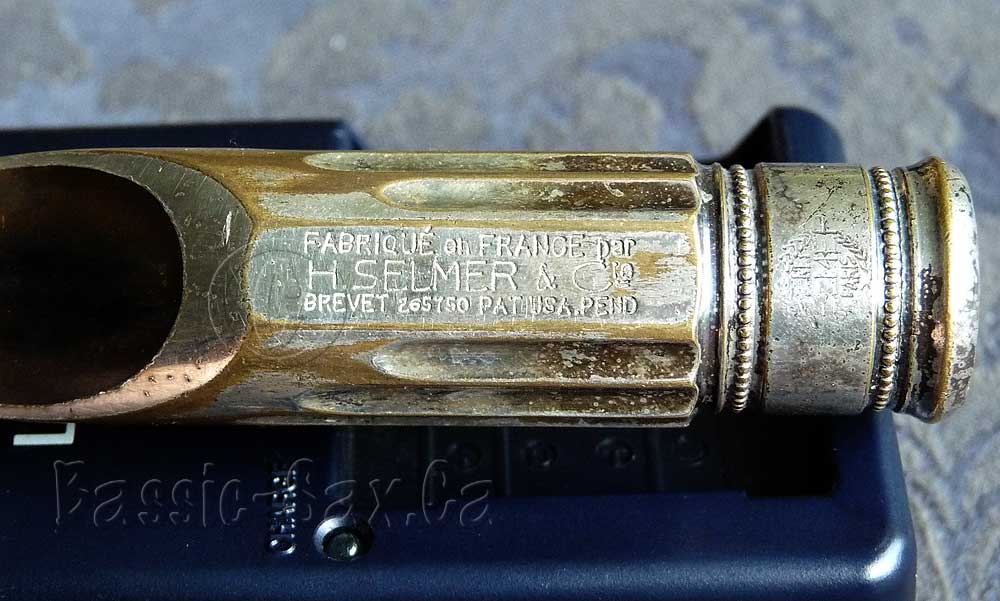
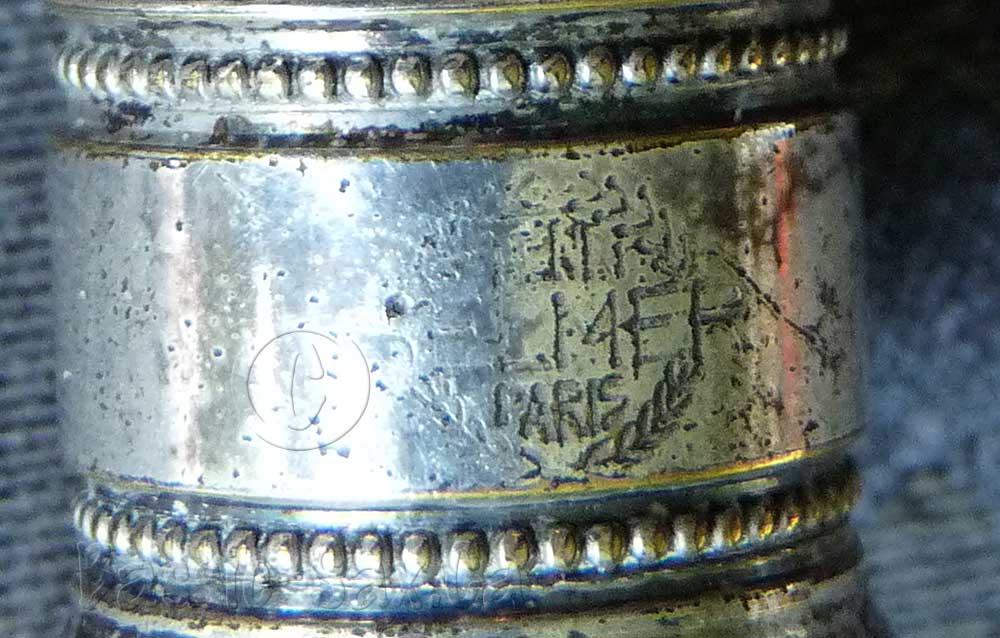
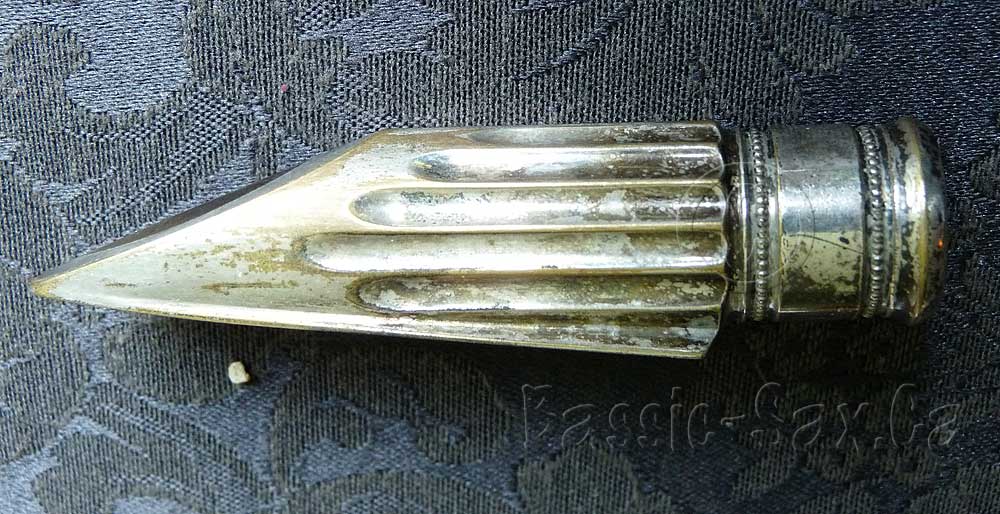

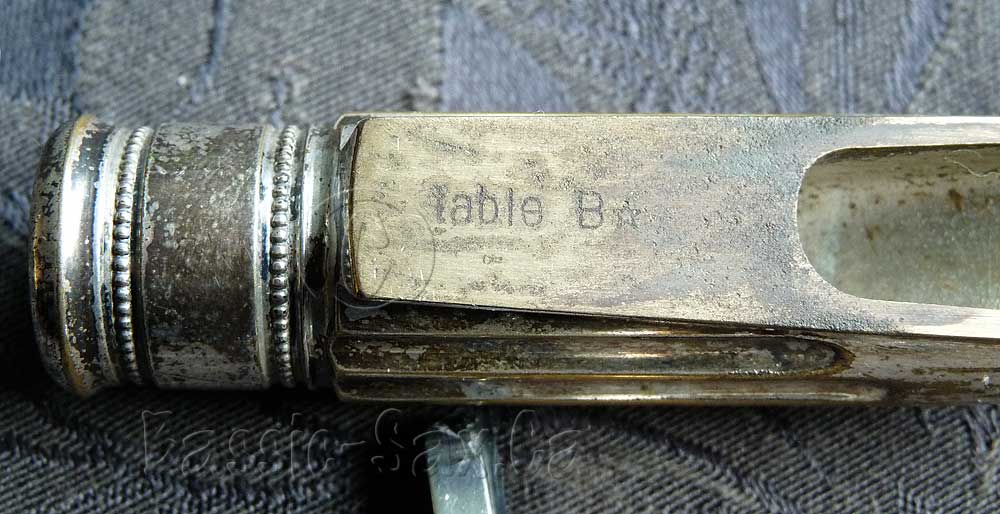




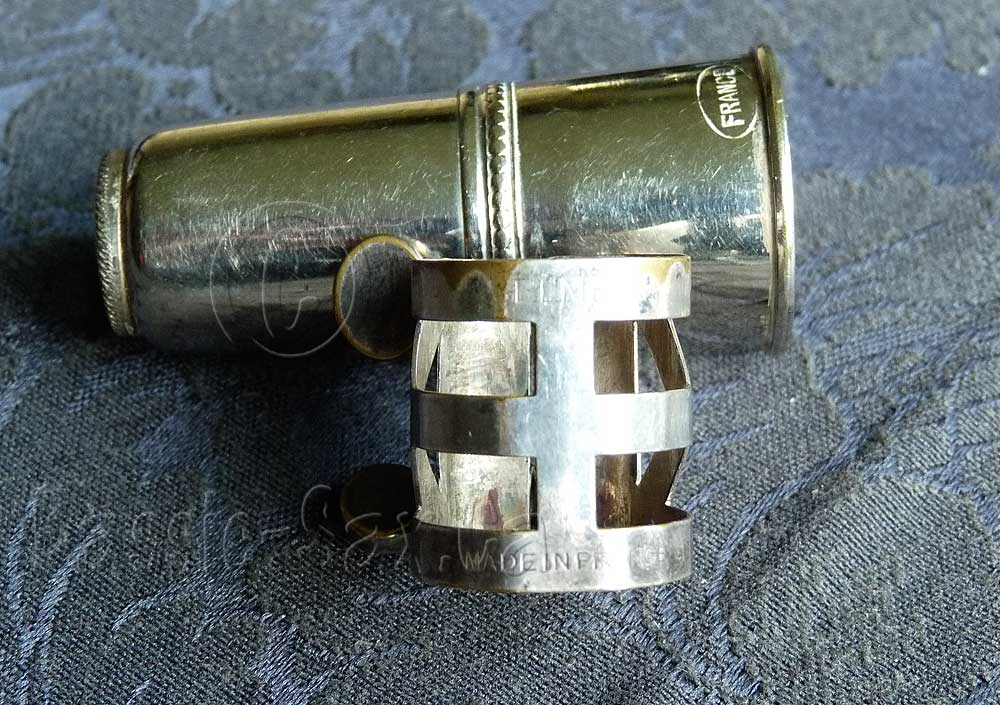
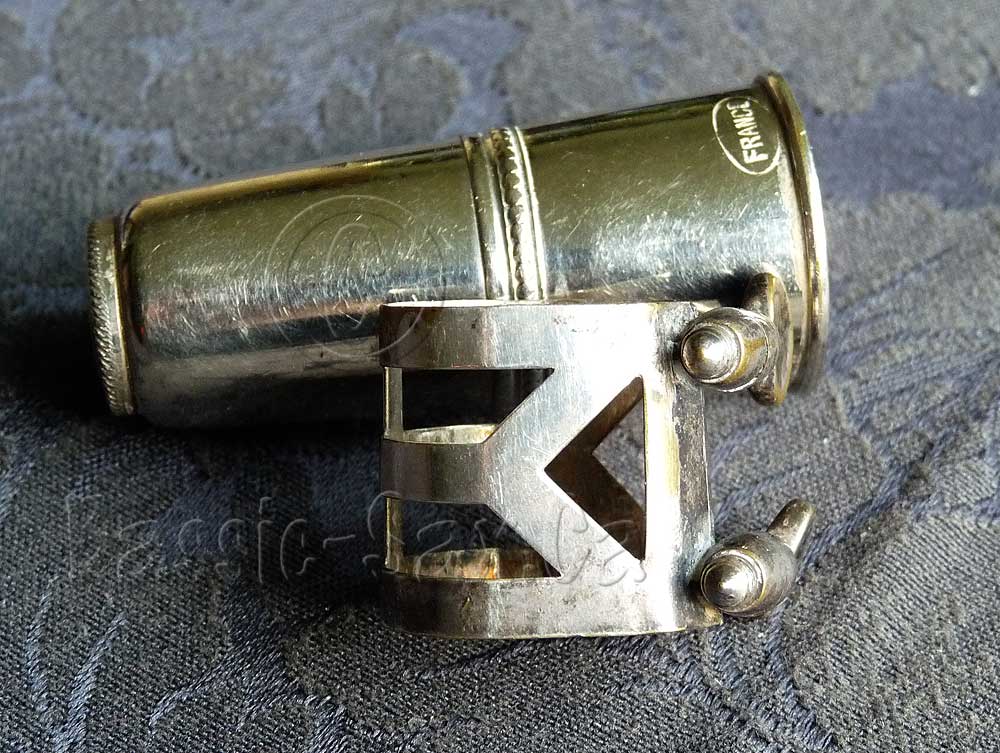



Ciao Helen, I have the same mouthpiece but it’s for tenor sax, and it has a real story behind, also it comes with the original metal cover (the sliding one) and I definitely love playong with it.
i am interestednin finding out more about that mouthpiece, if you have any information to help or you wanna share stories about it please email me at stefano.innao@libero.it I will send you a picture!!! Regards
Stefano
There are also simular Pierret metal mouthpieces.
http://www.ebay.de/itm/Pierret-Paris-Metallmundstuck-Alto-/291560192129?hash=item43e2577881
Thanks Theo! This one is interesting.
#5
Dear Helen: I have a similar if not identical Selmer mouthpiece. It included a Selmer ligature that was bent to be in shape with the smaller mouthpiece. The mouthpiece cap is old but not Selmer, it also included a “guard ” for the mouthpiece reed surface > I found the mouthpiece frozen on a very old Dolnet alto. I had to put the neck in the freezer and then take it out of the freezer and warm the mouthpiece under the hot water faucet to expand the mouthpiece enough to unstick it. I have pictures of all this including the unrestored Dolnet if you wish to see it. Thanks
Hi Bill. Sorry for taking a few days to answer. Your comment slipped past my radar screen.
Yes, I’d love to see photos. Sounds interesting. BTW, have you done any research into your Dolnet saxophone? I haven’t been able to find out much about them, so I am looking for some good sources of info. on the brand. I was wondering if you ave managed to turn up any.
When you send me pics, please send them to my gmail account. Thanks!
#4
#3
#2
#1
Hi Helen,
This is very interesting, indeed.
Referring to the rest of the drawings, I gather that the idea is to push the mouthpiece completely on to the neck until the end of it touches the “annular recess” (detail # 23) such that there is no reduction of the cross section where the chamber ends and the “bore” (this is usually called the “shank” or “throat” in today’s jargon) begins. (I hope that is clear, otherwise I’ll try to paraphrase it on request.) In other words, it either assumes a micro-tuner neck or a very flexible embouchure in order to accommodate differences in temperature, humidity, and the tuning of accompanying instruments. I can count on the fingers of one foot the number of Selmer saxophones that came from the factory with micro-tuner necks. :scratch:
The other thing that is interesting is the shape of the chamber itself. Among those designs that received patents, this is the earliest one of which that I am aware that is not in accord with Adolphe Sax’s specification that the chamber be larger than the throat in what I like to describe as a “cardioid” shape. (Think classic Otto Link or “Buescher True-Tone” pieces to imagine the shape I wish to describe.) Except for the baffle, this looks remarkably like the Wolfe Tayne, Guy Hawkins, and Geoff Lawton sort of chambers.
I’m not saying that they were copy cats or anything like that. It’s just that if you are looking for the same result, then the evidence tends to point in the same direction.
Peace,
paul
Hi Paul, Hi Helen,
The piece reminds me, in the size of the chamber and the shape of the ligature, of a Hummel Moutpiece. He made a Lawton like mouthpiece years before Lawton and is from the same time as this mouthpiece. Hummel became Zinner which still exists.
I suspect that the Lawton shaped mouthpiece of the Dearman was originally made by Hummel.
The Hummel mouthpiece was not fluted, but there is one fluted mouthpiece which has a lot of resemblance: the continental, made by Lelandais, which was also known by other names as le Jaseur for Toneking. The ligature is unknown, but it can use the same lig as the Selmer piece.
Three small chambered moutpieces combined with a new type of ligature in the same period. It looks like an old trend, opposing the large chambers from the beginning.
Now we are living in the time of intermediate sized chambers as a synthesis. Nice piece of living history.
Thank you guys. That’s very interesting information.
Re: the microtuner idea. My Pierret does have a Microtuner, and it just so happens that not only does it still function, but I didn’t have to adjust it at all for this Selmer mouthpiece. Where I had it set for the Runyon Custom m/p, is exactly where it needs to be for this m/p as well.
I’ll take a couple of photos later today and upload here in the comments section, of the mouthpiece on the Pierret’s neck. The m/p does look like it was made for the neck. Very sleek. Very slimming. 😉
Theo, I too have noticed many more very old Pierrets ending up on eBay lately. They seem to all be from France. Most of them appear to be the numbered models: Modele 5 and so forth. I would guess that the Modele D’ Artiste that I currently have here for play-testing, is from around the same time. I might have already mentioned this in my email, but compared to my 10M, the 1920s Pierret has better key layout, and is much more comfortable to play. I just wonder what Conn was thinking.
Anyways, gotta run. I have a man showing up in an hour with a white plastic saxophone. This should be fun. A day of playing around in my studio with vintage horns with another vintage horn enthusiast. What could be better?
Hi Helen,
A gentleman caller at 08:00?
Oulala!
:devil2:
Peace,
paul
Yup, I’m a sucker for cheap, white plastic. Especially when it comes in the shape of a saxophone. 😉
I finally took some pics yesterday of the mouthpiece on the neck of my Pierret. I’ll attach them as comments here, at the top of the comments section, in 5 separate ones sans words. Enjoy.
That piece of white plastic may be fragile and “cheap” in the sense of “shoddy” (but more because it’s 50 years old than anything else), but it most certainly is not “cheap” in the monetary sense!
When you said CHEAP white plastic, I was rather hoping someone was going to have you test drive a Vibratosax. That is a review I would like to have read.
Yeah, I’d like to try a Vibratosax too. If they weren’t so darn expensive, I’d order one just for fun. Sadly, they’re too expensive for just a toy horn—”toy” in the sense that I wouldn’t have any real use for it. At the present time, my fine, vintage altos don’t get out to shows. A plastic vibrato, if I was playing outdoor shows with a reggae or Latin band, then I could justify it… Maybe.
The only reason the Graftons are expensive now is because Parker played one, and was filmed, photographed, and recorded doing so. It also didn’t hurt that it is the most expensive sax ever sold. They were cheap, and I learned an interesting thing about them the other day: The bodies of these horns were so fragile, even when new, that the company sold replacement bodies for £11.00. I don’t know what the key guards sold for, or for that matter, if the company sold those as well, but I’m guessing that they did.
BTW, further to the Grafton, it looks like it might be sold. I’ll update the Grafton article page when the horn has officially changed hands, but at this point it looks to be sold to a pro player, from the east coast IIRC, who is going to fly out to here to pick up the sax in person.
I’m pleased because that’s exactly the kind of person who should have bought the Grafton. This person had played one in the past, and had been looking for one for quite some time.